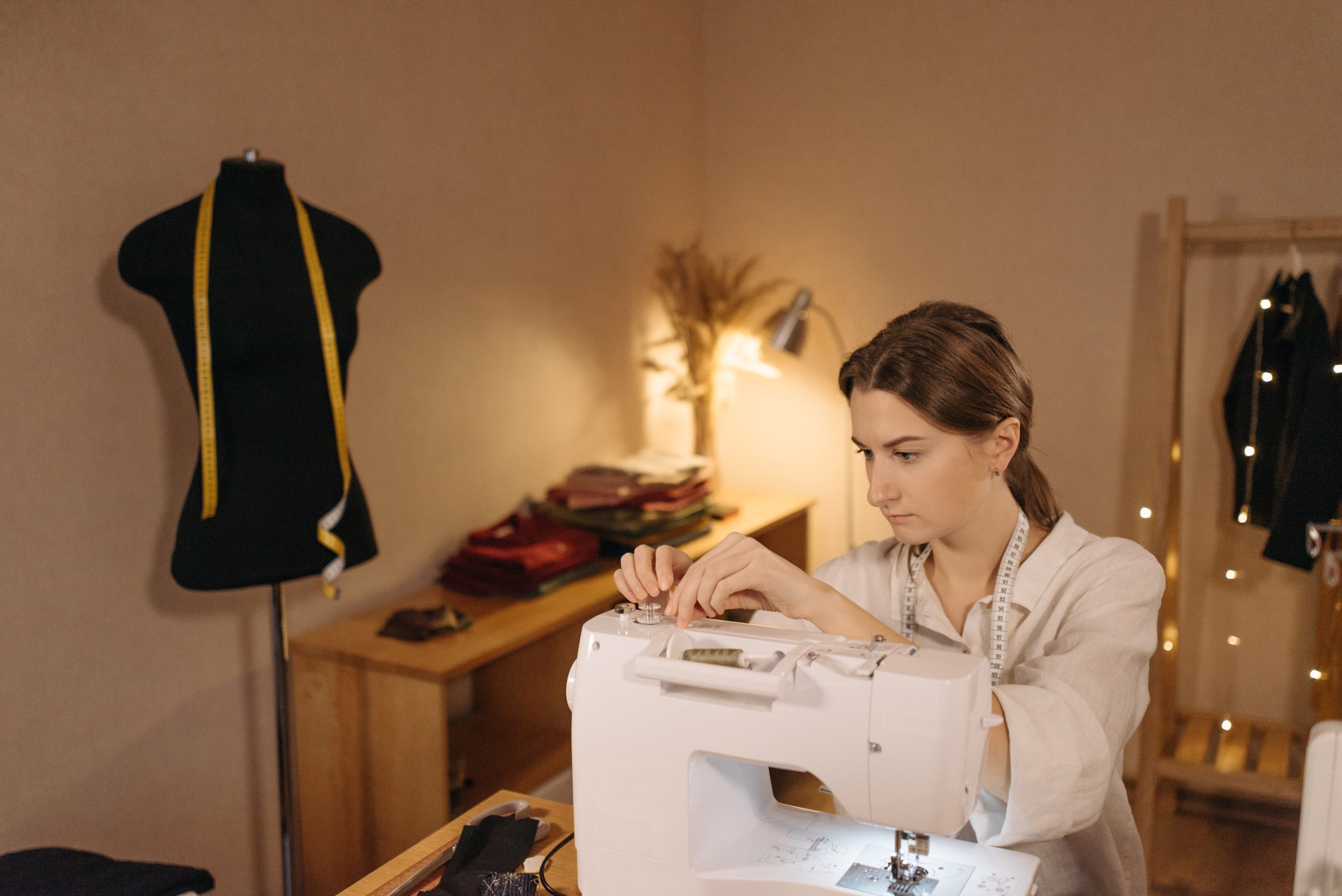There’s nothing more frustrating than nearing the end of a tricky seam and having the thread snap. Or perhaps you’ve noticed a long row of skipped stitches. The good news is that you can resolve the most common sewing machine problems without expensive repairs. These tips should help you troubleshoot the most common issues for effortless sewing.
Breaking thread
If your thread keeps knotting or breaking, then start by checking its quality and weight. It’s always worth buying the correct type of thread for machine sewing.
Next, check the machine threading. Rethread with the presser foot up, and try lowering the tension for the top thread. Finally, check that both top and bottom threads are the same weight to avoid repeat problems.
Skipped stitches
Your sewing machine skips a stitch as a result of the top thread not reaching the bobbin and locking in place. If skipped stitches are an absolute pain, start by checking the needle itself. Is it bent or broken? Was it installed correctly, and is it the right type for the fabric you’re sewing?
Now, go ahead and rethread your machine and test the locking action. If your sewing machine is still skipping stitches, there could be a timing issue. It could be a good idea to book in for an expert machine repair to solve the problem.
Thread bunching
Have you ever had to cut away a snarl of thread from the underside of a sewing project? You need an incredible amount of patience not to damage your sewing machine mechanism and the fabric you’re sewing!
Once you’ve sorted out the mess, it’s time to troubleshoot this common problem. First, rethread your machine following the instructions and keeping the presser foot raised. The tension can lock when the foot is lowered, making it impossible to thread your sewing machine correctly.
Next, check your bobbin. You’ll need to remove it and then rethread it, making sure it goes back into the bobbin case correctly. Take a minute to check for wear and tear. Any slight abrasions on the bobbin can alter how it fits into its case, causing it to wobble and changing the tension.
Bent and broken needles
Leaning about sewing machine needles can save you hours of frustration. Besides, a bent or broken needle isn’t just annoying. It can be dangerous too.
A useful rule of thumb is always to use a new needle when you start a project and choose one that’s suitable for the fabric you’re using. If the needle begins to bend or break, stop your machine and carefully remove the broken pieces before disposing of them properly.
If you find yourself changing needles frequently, try not to force the fabric as this can cause the metal to bend. Instead, trust the feed dogs to do the work. If you’re using the proper needle, it’s threaded up correctly, and it still breaks, there may be an underlying issue that requires repair.
Fabric doesn’t feed consistently
If you pride yourself on even seams, it can be incredibly frustrating if your machine stops drawing in the fabric evenly and consistently. The culprit is often the feed dogs which may become worn over time and therefore aren’t catching the material evenly.
You could also try adjusting the tension settings by using the general rule ‘righty tighty, left loosey’. You should also check the pressure of the foot you’re using and swap it out for a walking foot if necessary. Finally, if all else fails, book your machine in for annual maintenance.
Whatever’s causing your sewing machine problems, don’t fight your machine every time you start a new project. Instead, contact your local Franklins Group store to book in for a repair or browse our range of sewing machines.

